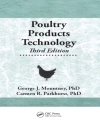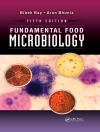This book provides an overview of biosurfactants as biobased compounds, and highlights novel applications in several industries, including biotech, food processing, cosmetic, oil recovery/petroleum, pharmaceutical, detergent and textile. In the past few decades, biosurfactants have emerged as promising alternative surface-active agents to chemical surfactants due to their high biodegradability, low toxicity, multi-functionality under extreme p H and temperature conditions, long-term physicochemical stability, and their production from renewable sources. This book presents the fundamental aspects (classification, structure, genetics, and properties) of biosurfactants and how their features contribute to the global bioeconomy.
Chapters from expert contributors discuss the latest screening, purification and characterization methods of new biosurfactants and biosurfactant-producing fungi and bacteria, including extremophiles. Particular attention is given to the role of biosurfactants in the formulation of sustainable agrochemicals, and their application as eco-friendly mosquitocidal agents, and biopesticides. Readers will discover a perspective on the antiviral activity of biosurfactants, in which the latest in vitro and in silico studies are discussed. Readers will also find more about the foremost therapeutic attributes of biosurfactant-mediated nanoparticles as next-generation drug delivery systems.
Given its breadth, this book appeals to a wide readership, from students and academic researchers to scientists and professionals from industry, interested in the study and application of microbial surfactants.
Inhaltsverzeichnis
Chapter 1. Screening methods for biosurfactant producing microorganisms.- Chapter 2. Purification assessment and assay of biosurfactant efficacy.- Chapter 3. Methods of screening and applications of biosurfactants produced by Actinomycetes.- Chapter 4. Methods of screening and applications of biosurfactants produced by cyanobacteria.- Chapter 5. Fungal biosurfactants and its applications.- Chapter 6. Production of biosurfactant by bacteria from extreme environments: Biotechnological potential and applications.- Chapter 7. Microbial Biosurfactants: An Eco-friendly perspective for environmental remediation.- Chapter 8. Lipopeptide and rhamnolipid biosurfactant as biopesticides.- Chapter 9. Biosurfactants for the formulation of sustainable agrochemicals.- Chapter 10. Biosurfactants: Role in plant growth promotion and disease management.- Chapter 11. Rhamnolipids from
Pseudomonas aeruginosa in the cleaning of polluted environments.- Chapter 12. Mosquitocidal activity of biosurfactant.- Chapter 13. Biosurfactants as promising surface-active agents: Current understanding and applications.- Chapter 14. Role of Biosurfactant in enzyme production.- Chapter 15. Biosurfactants in food processing industry.- Chapter 16. Biosurfactant in cosmetic industry.- Chapter 17. Applications of microbial biosurfactants in detergents.- Chapter 18. Application of biosurfactant in petroleum.- Chapter 19. Biosurfactants in medical industry.- Chapter 20. Biosurfactants: An antiviral perspective.- Chapter 21. Biosurfactants-mediated nanoparticles as next generation therapeutics.- Chapter 22. Production Cost of Traditional Surfactants and Biosurfactants.
Über den Autor
Dr. Pankaj Kumar completed his master’s and doctorate degrees at the Gurukula Kangri Vishawavidyalaya, Haridwar, Uttarakhand (India). He has 10+ years of teaching and research experiences. His research interest and expertise are Rhizosphere Microbiology and Microbial Biosurfactants. He has published several research papers in national and international reputed journals. He has edited two books Rhizosphere Engineering (2022), Macrophomina phaseolina: Ecobiology, Pathology and Management (2023) published by Academic Press (Elsevier), along with Prof R.C. Dubey. He is also a coauthor of An Objective Compendium on Food Science (Brillion publishing, India, 2022). He is life members of the Association of Microbiology of India (AMI), New Delhi and Indian Science Congress, Kolkata (West Bengal) and serving as reviewer and editorial board member of several national and international reputed journals. Currently, Dr. Pankaj is associated with the Departmentof Botany and Microbiology, H.N.B. Garhwal University (A Central University), Srinagar Garhwal, Uttarakhand, India.
Dr. Ramesh Chandra Dubey is a Professor, the Director (Research and Development Cell), Dean – Research, Dean – Faculty of Medical Science and Health, and the former Head of the Department of Botany and Microbiology, Gurukula Kangri Vishwavidyalaya, Haridwar, Uttarakhand (India). He obtained his M.Sc. and Ph.D. degrees from the internationally renowned Banaras Hindu University, Varanasi (India). He has 35+ years of teaching and research experience in the field of Agricultural Microbiology and Biotechnology. He has published more than 208 research papers in the National and International Journals of repute. His Google Citation Index is above 5173 till date. He has authored 7 books, and co-edited 10 books under different subjects such as agriculture, microbiology and biotechnology. In 2022, Dr. Dubey published a book, Vedic Microbiology with Motilal Banarsidas International, New Delhi (India).
Dr. Dubey is a Life Member and Fellow of the Indian Botanical Society, Indian Phytopathological Society and the International Society for Conservation of Natural Resources. He also previously served as the Chairman of the Institutional Animal Ethical Committee (IAEC) for 6 years (2015–2021) and the Councilor of the Indian Botanical Society for 3 years (2011–2013).












